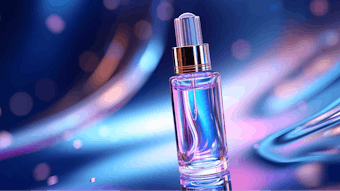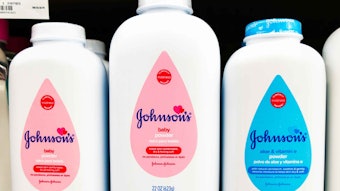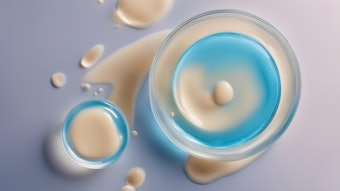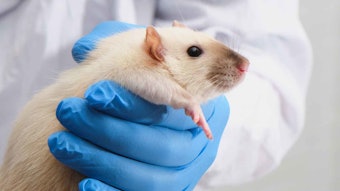
Read the full article in the January 2021 digital edition. . .
Originating from central Asia, Cannabis sativa is an annual herbaceous flowering plant. Although used medicinally for centuries,1, 2 it recently has experienced a significant resurgence in interest, becoming a buzzword in beauty.3 The main reasons behind this are the richness of chemical compounds produced by the plant and the significant opening up of regulatory markets.4
Cannabis plants contain more than 500 known compounds. In addition to phyto-cannabinoids, the plant contains saccharides, phenolic acids, flavonoids, stilbenes, lignans, fatty acids and terpenes.5-8 Several compounds of these classes are known to impart relevant biological activities in mammalian cells, including modulating appetite, pain sensation, mood, memory, inflammation and energy metabolism.9-10
In relation, plant cell and tissue cultures are an appropriate alternative to whole-plant cultivation both for studying and producing secondary metabolites of cosmetic interest. Moreover, plant cell cultures support the push toward sustainable sourcing methods to reduce land exploitation and minimize impact on the environment. At the same time, they represent a standardized, contaminant-free source of compounds for cosmetic applications on an industrial scale.11 Interestingly, many investigators have established callus cultures from the explants of different C. sativa organs (i.e., roots, hypocotyls, epicotyls, cotyledons, petioles, leaves and immature flower buds); however, scientific reports on secondary metabolite extraction and the biological properties of cannabis culture extracts are limited.
Taken together, this study examines and reports the properties and activities of a C. sativa cell culture extract. For example, cell suspension cultures of the botanical are prepared in a water/ethanol extract and tested for the capacity to modulate neurogenic inflammation in human cells. The term neurogenic inflammation describes the mechanism by which sensory nerves contribute to local inflammation by releasing inflammatory neuropeptides such as the Calcitonin Gene-Related Peptide (CGRP) and Substance P (SP).12 CGRP is the most abundant neuropeptide produced by the sensory nerves in the various skin layers13 and plays a striking role in the pathogenesis of inflammatory skin diseases such as psoriasis and atopic dermatitis.14-16
In the skin, the release of CGRP from the nerve fibers stimulates keratinocytes to produce pro-inflammatory cytokines including interleukins IL-1α, IL-6 and IL-8.17 In macrophages, it induces the release of the pro-inflammatory mediator histamine, which in turn triggers neuropeptide synthesis, thus establishing a bidirectional loop between sensory nerves and epidermis cells.18
While CGRP represents a pro-inflammatory neuropeptide, other types of neuropeptides such as β-endorphin produce an opposite effect, having analgesic and pain-relieving properties.19 β-Endorphins are mainly produced by nerve cells; however, a fully functional β-endorphins/receptor system is also present in skin keratinocytes, where it is involved in epithelization, tissue regeneration and pain relief.20, 21
Described herein are tests to assess the effects of C. sativa cell culture extract on CGRP in neuronal cells, and on histamine production in CGRP-treated macrophages. In addition, the extract’s activity is measured on the expression of genes involved in skin inflammation, such as those of the pro-inflammatory cytokines IL-1α, IL-8 and TNFα, and of the β-endorphin precursor POMC. Lastly, clinical studies examine its potential to soothe skin and reduce erythema.
In vitro Materials and Methods
C. sativa cell cultures and extract: C. sativa stem cells were obtained from leaves of the variety Carmagnola and grown in Gamborg B5 basal mediuma at a pH 5.7 supplemented with sucrose, myo-inositol, phytohormones and growth elicitors. After four weeks, the cells were collected and extracted using three volumes of ice-cold ethanol (96%). The obtained supernatant was distilled by a low-pressure evaporation process and lyophilized until obtaining a powder, which was then dissolved in water and used for the analyses and assays described at the required concentration.
Chemical analysis: A sample of cannabis extract was dissolved in water to a final concentration of 0.25 mg/mL; the analysis was performed by NP-HPLCb. The detection was performed by light scatteringc using the following settings: 45°C, gas flow 1.5 L/min, gain factor 1.
Cell cultures and reagents for bioassays: SHSY5Y neuroblastoma cells, HaCaT keratinocytes and macrophages RAW 264.7 were maintained in DMEM mediumd supplemented with 10% FBSe. Normal human epidermal keratinocytes (nHEK) were maintained in EpiLifed supplemented with human keratinocyte growth supplement (HKGS). All cell types were grown under 5% CO2 at 37°C. Additional materials procured included: capsaicin, capsazepine, T0901317 and cetirizine dihydrochloridef; the human neuropeptide CGRPg; and the CGRP Enzyme Immunoassay kit Bertin Pharmah.
Gene expression analysis: For gene expression analyses of CGRP and POMC, 1.8 × 106 SHSY5Y or 1.5 × 106 NHEK, respectively, were seeded in six-well plates and treated with C. sativa extract or capsaicin for 6 hr. For the proinflammatory cytokines, 1.5 × 106 HaCaT cells were seeded in six-well plates pretreated with C. sativa extract for 16 hr, then stressed with 1 nM CGRP for 1 hr.
After the treatments, cells were collected and RNA was extractedj. The RNA was first treated with DNase I to eliminate contaminating genomic DNA and then cDNA was synthesizedk. RT-PCR was performed using gene specific primers and the QuantumRNA 18S internal standardm. The amplification reactions were performed according to the following scheme: 2 min at 94°C, followed by 35 cycles of 94°C for 30 sec, annealing temperature (specific for each gene) for 30 sec, and 72°C for 30 sec with a 10 min final extension at 72°C. The obtained PCR products were loaded onto 1.5% agarose gel and the amplification bands, visualized and quantifiedn, were normalized to the amplification band corresponding to the 18S. The average values, obtained from three independent experiments, were converted into percentage values by considering the measurement of the untreated control as 100%.
CGRP measurements: The amount of CGRP neuropeptide produced was measured using the ELISA assay by seeding 1 × 105 SHSY5Y in a 96-well plate and treating the samples with the extract for 4 hr before adding 50 μM capsaicin alone or in the presence of capsazepine. After 24 hr, the cell media was collected and transferred to anti-CGRP monoclonal antibody-coated plates (CGRP human) and the assayp was performed according to the manufacturer’s instructions.
Histamine measurements: Macrophages RAW264.7 were seeded at a density of 5 × 104 cells/well in 96-well plates and treated with C. sativa extract for 2 hr. The cells were then treated with 10 nM CGRP and the amount of histamine was measured after 16 hr by adding a solution of 0.4 M NaOH and 1 mg/mL of O-Phthaldialdehyde (OPA) in methanol. After 10 min, 0.1 M HCl was added to each well to stop the reaction and the fluorescence intensity—proportional to the amount of released histamine—was measured at 443 nm by a Multi-plate Reader.
Statistical analysis: All in vitro experiments were conducted in triplicate and repeated three times. The data was expressed as the mean ± the standard deviation of the values obtained by three independent experiments. Statistical comparisons between controls and treated groups were performed according to the student’s t-test using the softwareq; p values lower than 0.05 were considered statistically significant. The number of asterisks in the graphs indicate the level of significance; i.e., *** = p < 0.001; ** = p < 0.01; and * = p < 0.05.
Clinical Test Protocols
Skin erythema index: A total of 20 healthy volunteers between the ages of 20 and 65 with normal skin were enrolled in this study and gave their written informed consent. Three different sites on their forearms, referred to as A, P and C, were identified where erythema was induced by applying a solution of 30% sodium laureth sulfate. Skin erythema was quantified instrumentallyr. First, the baseline erythema index was calculated, then study products were applied on the different areas, including: a formulation containing cannabis extract on A (see Formula 1), a placebo cream on P, and nothing on C (control area). After 30 min, the erythema index was measured to evaluate the soothing effect of the tested products. Three sequential measurements on each area were taken and the data was expressed as a mean value variation % from the baseline.
TEWL and Corneometers hydration index: The rate of transepidermal water loss (TEWL, g/hm2) and corneometer hydration indices are the most important parameters for evaluating the efficiency of skin barrier function. The volunteers were directed to apply each formulation to the three different areas twice daily, in the morning and evening, for 14 consecutive days. Skin hydration levelss and TEWL valuest were assessed at the baseline, after erythema induction and post-application for 7 and 14 days.
Statistical analysis: For the clinical tests, the student’s t-test was performed using softwareu; a p value < 0.05 was considered significant.
Results: Cell Culture Extract and Chemical Analysis
Starting from Cannabis sativa plants, cell suspension cultures were developed using a specific growth medium, optimized to obtain the highest yield of cell biomass per volume. The biomass was extracted in ethanol 96% (1:3 w/v ratio), and the obtained extract contained flavonoids (including cannflavin B), phenolic acids and their glucosides, spiro-compounds (such as cannabispirol), vitamins and terpenes, as determined by mass spectrometry analysis.
Concentrations of cannabinol (CBN), cannabidiol (CBD) and cannabidiolic acid (CBDA) lower than 1 mg/100 g of dried extract were detected, in agreement with previous studies reporting that cannabis callus cultures produce undetectable or very low levels of cannabinoids, irrespective of the elicitors or growth regulators used in the culture medium.22 As expected, due to the plant variety used for obtaining the cells, the psychoactive compounds Δ9-tetrahydrocannabinol (THC) and Δ9-tetrahydrocannabinolic acid (THCA) were absent from the extract.
. . .Read more in the January 2021 digital edition. . .
References
- Russo, G.L. (2007). Ins and outs of dietary phytochemicals in cancer chemoprevention. Biochemical Pharmacology 74(4) 533-544.
- Koltai, H. and Namdar, D. (2020). Cannabis phytomolecule 'entourage': From domestication to medical use. Trends in Plant Sci S1360-1385(20) 30122-9.
- Blinkoff, S., Lord, L. and Weiss, C. (2020). Cannabis in cosmetics. Happi.
- Solymosi, K. and Köfalvi, A. (2017). Cannabis: A treasure trove or Pandora's box? Mini Reviews Med Chem 17(13) 1223–1291.
- ElSohly, M.A., Radwan, M.M., Gul, W., Chandra, S. and Galal, A. (2017). Phytochemistry of Cannabis sativa L. Progress Chem Org Nat Prod 103 1-36.
- Andre, C.M., Hausman, J.F. and Guerriero, G. (2016). Cannabis sativa: The plant of the thousand and one molecules. Frontiers Plant Sci 7 19.
- Flores-Sanchez, I.J. and Verpoorte, R. (2008). PKS activities and biosynthesis of cannabinoids and flavonoids in Cannabis sativa L. plants. Plant & Cell Physiology 49(12) 1767-1782.
- Gülck, T. and Møller, B.L. (2020). Phytocannabinoids: Origins and biosynthesis. Trends in Plant Sci. S1360-1385(20) 30187-4.
- De Petrocellis, L., Ligresti, A., Moriello, A.S., Allarà, M., Bisogno, T., Petrosino, S., Stott, C.G. and Di Marzo, V. (2011). Effects of cannabinoids and cannabinoid-enriched cannabis extracts on TRP channels and endocannabinoid metabolic enzymes. Br J Pharmacol 163(7) 1479-94.
- Di Marzo, V. and Piscitelli, F. (2015). The endocannabinoid system and its modulation by phytocannabinoids. Neurotherapeutics 12(4) 692-698.
- Apone, F., Tito, A., Arciello, S., Carotenuto, G. and Colucci, M.G. (2020). Plant tissue cultures as sources of ingredients for skin care applications. Annual Plant Reviews 3 135-150.
- Geppetti, P., Nassini, R., Materazzi, S. and Benemei, S. (2008). The concept of neurogenic inflammation. BJU Int 101, suppl 3 2-6.
- Franco-Cereceda, A. and Liska, J. (2000). Potential of calcitonin gene-related peptide in coronary heart disease. Pharmacology 60(1) 1-8.
- Ye, G., Ren, X.Z., Qi, L., Wang, L. and Zhang, Y. (2017). CGRP modulates the pathogenetic process of psoriasis via promoting CCL27 secretion in a MAPK- and NF-kB signaling pathway-dependent manner. Biomedical Res 28(14) 6319-6325.
- Chu, D.Q., Choy, M., Foster, P., Cao, T. and Brain, S.D. (2000). A comparative study of the ability of calcitonin gene-related peptide and adrenomedullin to modulate microvascular but not thermal hyperalgesia responses. Brit J Pharmacol 130(7) 1589-1596.
- He, Y., Ding, G., Wang, X., Zhu, T. and Fan S. (2000). Calcitonin gene-related peptide in Langerhans cells in psoriatic plaque lesions. Chinese Med J 113(8) 747-751.
- Park, Y.M. and Kim, C.W. (1999). The effects of substance P and vasoactive intestinal peptide on interleukin-6 synthesis in cultured human keratinocytes. J Dermatol Sci 22(1) 17-23.
- Peters, E.M., Ericson, M.E., Hosoi, J., Seiffert, K., Hordinsky, M.K., Ansel, J.C., Paus, R. and Scholzen, T.E. (2006). Neuropeptide control mechanisms in cutaneous biology: Physiological and clinical significance. J Invest Derm 126(9) 1937-1947 (2006).
- Corder, G., Castro, D.C., Bruchas, M.R. and Scherrer, G. (2018). Endogenous and exogenous opioids in pain. Annual Rev Neuroscience 41 453-473.
- Bigliardi, P.L., Büchner, S., Rufli, T. and Bigliardi-Qi, M. (2002). Specific stimulation of migration of human keratinocytes by mu-opiate receptor agonists. J Receptor and Signal Transduction Research 22(1-4) 191-199.
- Subadi, I., Nugraha, B., Laswati, H. and Josomuljono, H. (2017). Pain relief with wet cupping therapy in rats is mediated by heat shock protein 70 and b-endorphin. Iranian J Med Sci 42(4) 384-391.
- Pacifico, D., Miselli, F., Carboni, A., Moschella, A. and Mandolino, G. (2008). Time course of cannabinoid accumulation and chemotype development during the growth of Cannabis sativa L. Euphytica 160 231-240.
Captions/Footnote:
a Duchefa Biochemie
b Perkin Elmer Series 200, using a Supelcosil LC-SI 250 x 4.6, 5 µm
c Alltech 3300 ELSD
d Gibco, Life Technologies, Massachusetts, UK
e Hyclone, GE Healthcare Life Sciences
f Sigma-Aldrich, Milano
g Cayman Chemical Company, Michigan, USA
h Vinci Biochem, Florence
j GenElute Mammalian Total RNA Miniprep kit, Sigma-Aldrich, Milano
k RevertAid First Strand cDNA synthesis Kit, Thermo Fisher Scientific, Dallas
m Ambion
n Geliance 200 Imaging system, Perkin Elmer, Woodbridge, Ontario, Canada
p Enzyme immuno assay kit, Bertin Pharma
q GraphPad prism version 8
r Mexameter MX 18 probe, Courage+Khazaka Electronic GmbH
s Corneometer, Courage & Khazaka, Koln-West Germany
t Tewameter TM 300, Courage+Khazaka Electronic GmbH
u SPSS software 15.0 for Windows, SPSS Science, Chicago



!['[Sunscreen] developers will be able to innovate more efficiently while maintaining high standards of quality and safety for consumers.'](https://img.cosmeticsandtoiletries.com/files/base/allured/all/image/2024/06/woman_outside_using_sunscreen_on_face_ISO_test_standards_AdobeStock_783608310.66678a92029d9.png?auto=format%2Ccompress&fit=crop&h=191&q=70&rect=62%2C0%2C2135%2C1200&w=340)







